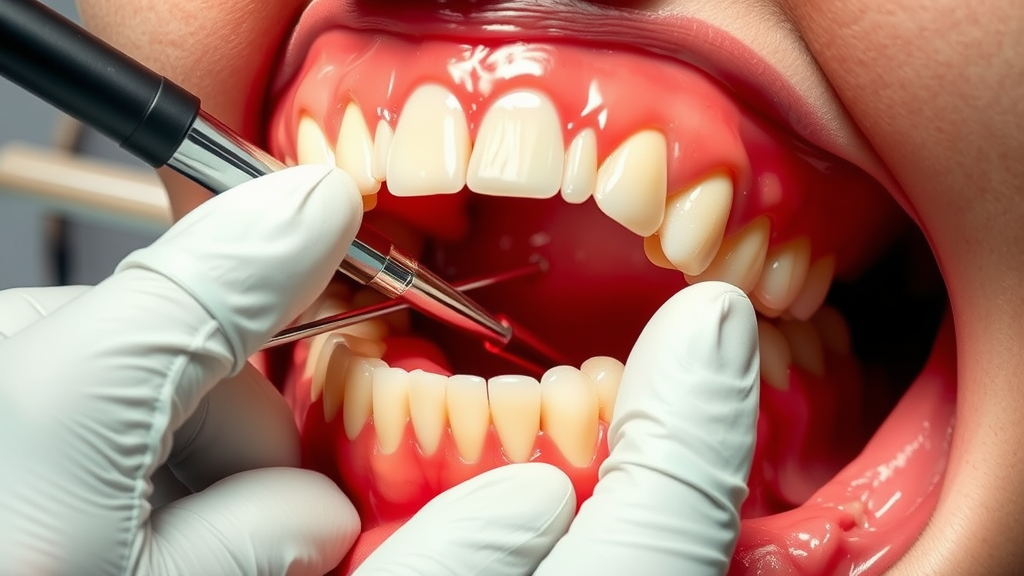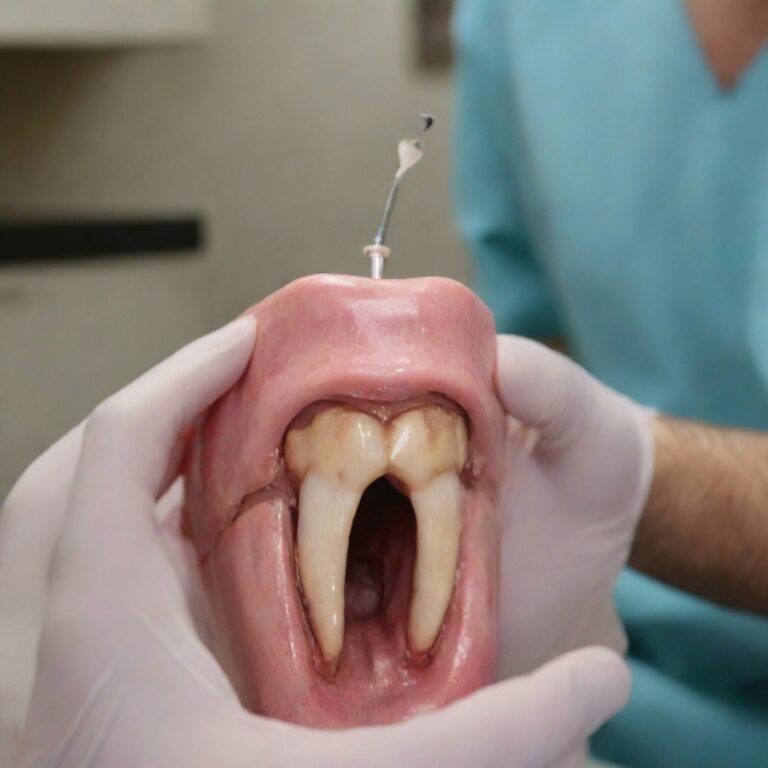Emergency Wisdom Tooth Extraction

When Is Emergency Wisdom Tooth Extraction Necessary?
While many people can schedule their wisdom tooth removal in advance, certain situations demand immediate attention from a dental professional. Severe pain, swelling, or infection associated with wisdom teeth can escalate quickly, requiring emergency extraction to prevent serious complications.
Understanding Urgent Wisdom Tooth Situations
Intense, throbbing pain that doesn’t respond to over-the-counter medications often signals a need for emergency care. When wisdom teeth become severely infected or impacted, they can cause unbearable discomfort and potentially life-threatening conditions if left untreated. The pressure from these third molars can also damage neighboring teeth and create lasting oral health problems.
Critical Signs Requiring Immediate Attention
• Severe, persistent pain that interferes with daily activities • Significant facial swelling and tenderness • Difficulty opening your mouth or swallowing • Fever accompanied by tooth pain • Bleeding or pus around the wisdom tooth area • Persistent bad taste or breath that won’t go away
Common Emergency Scenarios
Pericoronitis, an infection occurring around partially erupted wisdom teeth, frequently necessitates emergency extraction. This condition develops when food particles and bacteria become trapped under the gum flap covering the emerging tooth. The resulting infection can spread rapidly, causing severe pain and swelling.
Another urgent scenario involves impacted wisdom teeth that suddenly cause intense pain. These teeth, unable to emerge properly due to lack of space, can create pressure against other teeth and lead to severe complications requiring immediate intervention.
The Emergency Extraction Process
During an emergency wisdom tooth extraction, your dentist will first assess the severity of your condition through X-rays and examination. They’ll administer appropriate anesthesia to ensure your comfort during the procedure. The extraction might be more challenging if significant inflammation is present, but dental professionals are trained to handle such situations safely.
Post-Emergency Extraction Care
Recovery from an emergency wisdom tooth extraction requires careful attention to post-operative instructions. Your dentist will likely prescribe:
• Antibiotics to combat infection • Pain medication for discomfort management • Detailed aftercare instructions • Follow-up appointment schedule
Preventing Emergency Situations
Regular dental check-ups can help identify potential wisdom tooth problems before they become emergencies. Your dentist can monitor the development and position of your wisdom teeth through X-rays and recommend extraction before serious complications arise. However, even with proper monitoring, emergencies can still occur.
Risk Factors and Complications
Certain factors increase the likelihood of requiring emergency wisdom tooth extraction:
• Age (wisdom teeth typically emerge between 17-25 years) • Limited jaw space • Poor oral hygiene • History of dental problems • Misaligned teeth
Delaying treatment when experiencing severe wisdom tooth pain can lead to more serious complications, including:
• Spread of infection to nearby teeth and tissues • Development of cysts or tumors • Damage to adjacent teeth • Systemic infection affecting other body parts • Prolonged recovery time
Remember that severe wisdom tooth pain isn’t something to ignore or try to tough out. When experiencing intense discomfort or any of the warning signs mentioned above, contact an emergency dental provider immediately. Many dental offices maintain emergency hours or have on-call services specifically for such situations. Quick action can prevent more serious complications and provide much-needed relief from the debilitating pain associated with wisdom tooth emergencies.
Signs and Symptoms That Require Immediate Dental Attention
Experiencing severe dental pain and wondering if you need emergency care? When it comes to wisdom teeth, certain symptoms demand immediate attention from a dental professional. Understanding these warning signs can help you make timely decisions about seeking urgent dental care.
Intense, Persistent Pain
Severe pain that radiates from your jaw to your head, neck, or ears could indicate a serious wisdom tooth problem. This discomfort often worsens when chewing or touching the affected area. If over-the-counter pain medications provide no relief, you should seek emergency dental care immediately.
Significant Swelling and Infection Signs
Facial swelling, especially around your jaw or cheek area, might signal an infected wisdom tooth. Watch for these warning signs:
• Tender, swollen lymph nodes under your jaw • Difficulty opening your mouth fully • Red, inflamed gum tissue around the wisdom tooth • Unusual taste or bad breath that doesn’t go away • Fever or general feeling of illness
These symptoms could indicate a serious infection called pericoronitis, which requires immediate professional intervention to prevent complications.
Bleeding and Tissue Damage
Active bleeding around your wisdom tooth area shouldn’t be ignored. While some minor bleeding is normal during tooth eruption, excessive or persistent bleeding might indicate:
• Tissue trauma from impacted wisdom teeth • Infection-related bleeding • Damage to surrounding teeth or gums • Complications from partially emerged wisdom teeth
Impaction Complications
When wisdom teeth become trapped beneath your gums or can’t fully emerge, they’re considered impacted. Emergency extraction might be necessary if you experience:
• Severe pressure against adjacent teeth • Formation of cysts around the impacted tooth • Risk of damage to nearby tooth roots • Alignment problems with other teeth
Difficulty in Daily Activities
Sometimes, wisdom tooth problems can significantly impact your daily life. Seek immediate care if you notice:
• Problems eating or drinking • Difficulty speaking clearly • Inability to sleep due to pain • Challenges maintaining proper oral hygiene • Impact on your ability to concentrate
Risk of Spreading Infection
Dental infections from problematic wisdom teeth can spread quickly. Watch for these dangerous symptoms:
• Difficulty breathing or swallowing • Swelling that extends down your neck • Fever accompanied by facial swelling • General malaise or weakness
These symptoms could indicate a potentially life-threatening condition called Ludwig’s angina, requiring immediate emergency treatment.
Preventive Measures While Awaiting Care
While arranging emergency dental care, you can take these temporary steps:
• Rinse gently with warm salt water • Apply cold compresses to reduce swelling • Take over-the-counter pain relievers as directed • Keep the area clean but avoid aggressive brushing • Stay hydrated and maintain soft food diet
Remember, these measures are temporary solutions. Professional dental evaluation is crucial for proper diagnosis and treatment. Delaying necessary wisdom tooth extraction can lead to more severe complications and potentially more complex surgical procedures. Many dental offices offer emergency services specifically for situations involving wisdom teeth, understanding that timing can be critical in preventing further complications.
Don’t hesitate to contact an emergency dental service if you experience any of these symptoms, especially during evenings or weekends. Most dental professionals would rather address a potential emergency promptly than deal with complications from delayed treatment.
The Emergency Extraction Procedure Step by Step
When faced with severe wisdom tooth pain that requires immediate attention, understanding the emergency extraction process can help ease anxiety. The procedure typically begins with a thorough examination and X-rays to assess the tooth’s position and potential complications.
Understanding the Initial Assessment
Before any extraction begins, your dentist will conduct a detailed evaluation of your oral health. This includes checking for signs of infection, reviewing your medical history, and ensuring you’re a suitable candidate for immediate extraction. Digital X-rays provide crucial information about the tooth’s roots and proximity to nerves.
Pre-Extraction Preparation
Your dental team will prepare you for the procedure by:
- Administering appropriate anesthesia
- Cleaning and sterilizing the surgical area
- Positioning protective barriers
- Setting up necessary surgical instruments
- Monitoring vital signs if using sedation
The type of anesthesia used depends on various factors, including the complexity of the extraction and your anxiety level. Options range from local anesthesia to conscious sedation or general anesthesia for more complicated cases.
The Extraction Process
During the actual removal, your oral surgeon follows these precise steps:
- Tissue Separation: Carefully detaching the gum tissue around the wisdom tooth
- Tooth Exposure: Creating access to the impacted tooth if necessary
- Sectioning: Dividing the tooth into smaller pieces if required for easier removal
- Careful Extraction: Removing the tooth using specialized surgical instruments
- Site Cleaning: Thoroughly cleaning the socket to prevent infection
Immediate Post-Procedure Care
Right after the extraction, your dental team will:
- Place sterile gauze over the surgical site
- Provide detailed aftercare instructions
- Prescribe necessary medications
- Schedule a follow-up appointment
The entire emergency extraction procedure typically takes between 30 to 60 minutes, depending on the tooth’s position and any complications that may arise during the process.
Essential Recovery Guidelines
Following the procedure, you’ll need to:
- Keep the gauze in place for several hours
- Avoid rinsing or spitting for 24 hours
- Apply ice packs to reduce swelling
- Take prescribed medications as directed
- Stick to soft foods for several days
Recovery usually takes about one week, during which time you’ll need to be vigilant about following post-operative care instructions to prevent complications like dry socket or infection.
Managing Post-Procedure Expectations
Most patients experience:
- Swelling peaks around 48-72 hours post-surgery
- Gradual improvement in pain levels over 3-5 days
- Complete healing of the extraction site within 2 weeks
- Return to normal eating habits after 7-10 days
It’s essential to understand that while the procedure is considered emergency care, proper healing takes time. Maintaining good oral hygiene while being gentle around the surgical site promotes faster recovery and prevents complications.
Remember, emergency wisdom tooth extraction, while urgent, still requires careful attention to proper surgical protocols and post-operative care. Following your dentist’s instructions precisely will help ensure a smooth recovery and prevent future complications. Should you experience unusual symptoms or severe pain during recovery, contact your dental provider immediately for professional guidance.
Recovery and Aftercare Following an Urgent Removal
After undergoing an emergency wisdom tooth extraction, proper recovery and aftercare are crucial for preventing complications and ensuring optimal healing. The initial 24 hours following the procedure require special attention to protect the surgical site and promote successful recovery.
Managing Pain and Swelling
The first step in your recovery journey involves managing discomfort and swelling effectively. Apply ice packs to your cheeks in 15-minute intervals during the first day. This helps reduce inflammation and provides natural pain relief. Take prescribed pain medications exactly as directed by your dentist, and don’t wait until the pain becomes severe before taking them.
Blood Clot Protection
Protecting the blood clot at the extraction site is vital for proper healing. To safeguard this important clot:
• Avoid using straws for at least 72 hours • Don’t smoke or use tobacco products • Skip spitting or rinsing forcefully • Eat soft foods that don’t require vigorous chewing • Keep your head elevated while sleeping
Dietary Considerations
Your food choices play a significant role in the healing process. Focus on consuming:
• Cool, soft foods like yogurt and pudding • Lukewarm soups (not hot) • Mashed potatoes • Smoothies eaten with a spoon • Well-cooked pasta
Gradually introduce more solid foods as your comfort level increases, but avoid crunchy, sticky, or spicy foods that could irritate the surgical site.
Oral Hygiene Practices
Maintaining clean teeth and gums is essential, but you’ll need to modify your usual routine. Wait 24 hours before gentle brushing, avoiding the extraction site. After 24 hours, carefully rinse with warm salt water several times daily, especially after meals. Mix one teaspoon of salt with eight ounces of warm water for an effective healing solution.
Physical Activity Guidelines
Rest is crucial during the initial recovery period. Avoid strenuous activities for at least 48-72 hours after the procedure. When you resume normal activities, do so gradually. Excessive physical exertion can increase bleeding and discomfort, potentially disrupting the healing process.
Warning Signs to Monitor
While some discomfort is normal, be alert for signs that require immediate attention:
• Severe pain that doesn’t respond to medication • Excessive bleeding continuing beyond 24 hours • Fever or chills • Difficulty swallowing or breathing • Persistent numbness • Foul taste or odor from the extraction site
Long-term Care Considerations
Complete healing typically takes several weeks. During this time, maintain good oral hygiene and attend all follow-up appointments. Your dentist may recommend specific products or additional care instructions based on your healing progress. If stitches were used, they might need removal, or they may dissolve on their own.
Remember that everyone’s recovery experience is unique. Some people might heal quickly with minimal discomfort, while others may need more time. Follow your dentist’s specific instructions carefully, and don’t hesitate to contact them if you have concerns during your recovery period. With proper care and attention, most people return to their normal routines within a few days, though complete healing of the extraction site continues for several weeks.
Potential Complications and Prevention Strategies
Understanding the potential complications of emergency wisdom tooth extraction and implementing preventive measures is crucial for a successful recovery. While most extractions proceed smoothly, being aware of possible issues helps you stay proactive and seek timely care when needed.
Common Post-Extraction Complications
Dry socket remains one of the most frequent complications, occurring when the blood clot protecting the extraction site becomes dislodged. This painful condition exposes nerve endings and delays healing. Other notable complications include:
• Excessive bleeding beyond 24 hours • Severe swelling that worsens after several days • Persistent numbness in the tongue or lip area • Difficulty opening the mouth fully • Signs of infection like fever and pus discharge • Sinus communication issues in upper wisdom teeth removal
Infection risks increase significantly when emergency extractions are performed in less-than-ideal conditions. Bacteria can enter the surgical site, leading to painful swelling and potential spread to surrounding tissues. In rare cases, infections may progress to more serious conditions requiring immediate medical intervention.
Essential Prevention Strategies
Following proper aftercare instructions significantly reduces complication risks. Start by maintaining strict oral hygiene while being gentle around the surgical site. Rinse with warm salt water several hours after surgery, but avoid vigorous swishing that might dislodge the blood clot.
Creating an optimal healing environment involves:
• Taking prescribed antibiotics exactly as directed • Avoiding smoking and tobacco products completely • Keeping your head elevated while sleeping • Using ice packs during the first 24 hours • Eating soft foods and avoiding the extraction site • Skipping straws and spitting for at least 72 hours
Recovery Monitoring and Care
Regular monitoring helps identify potential issues early. Check the extraction site daily for unusual changes or persistent pain. While some discomfort is normal, increasing pain after 3-4 days warrants professional attention. Keep detailed records of any symptoms to share with your dental provider if complications arise.
Temperature regulation plays a crucial role in preventing complications. Apply ice packs for the first 24 hours, then switch to warm compresses if needed for comfort. This helps manage swelling and promotes proper blood flow to the healing area.
Long-term Protection Measures
Maintaining good oral hygiene becomes even more critical after an emergency extraction. Use a soft-bristled toothbrush and gentle cleaning techniques around the surgical site once healing begins. Incorporate antimicrobial mouthwash as recommended by your dentist to prevent infection.
Diet modification supports healing and prevents complications. Choose nutrient-rich, soft foods that don’t require much chewing. Avoid seeds, nuts, and small particles that might get trapped in the extraction site. Stay well-hydrated but remember to drink without using straws.
Medical Alert Signs
Recognizing warning signs helps prevent serious complications. Contact your dental provider immediately if you experience:
• Fever over 101°F (38.3°C) • Severe pain unrelieved by prescribed medication • Excessive bleeding that soaks gauze within 30 minutes • Difficulty breathing or swallowing • Swelling that extends to the neck area • Persistent numbness beyond 24 hours
Understanding these complications and following prevention strategies diligently significantly improves your recovery outlook after emergency wisdom tooth extraction. Remember that early intervention often prevents minor issues from developing into serious complications.
Conclusion
Emergency wisdom tooth extraction, while intimidating, is a well-established procedure that dental professionals perform regularly to provide immediate relief and prevent further complications. By recognizing the warning signs early and seeking prompt medical attention, you can avoid severe pain and potential health risks associated with problematic wisdom teeth. Remember that proper aftercare following the procedure is crucial for a smooth recovery and minimal complications.
Your active participation in the healing process, including following post-operative instructions and maintaining good oral hygiene, will significantly impact your recovery time and comfort level. While complications can occur, they are generally manageable when addressed promptly and with appropriate medical care.
If you’re experiencing severe wisdom tooth pain or related symptoms, don’t hesitate to contact an emergency dental provider. The longer you wait, the more likely you are to develop serious complications that could affect your overall oral health. Modern dental techniques and anesthesia options make the procedure much more comfortable than in the past.
Stay proactive about your dental health by attending regular check-ups, which can help identify potential wisdom tooth issues before they become emergencies. Should you require an emergency extraction, trust that your dental professional will guide you through the process with expertise and care, ensuring the best possible outcome for your oral health.
Remember, your comfort and well-being are the top priorities during this dental emergency. With proper care and attention, you can overcome wisdom tooth complications and return to your normal daily activities with minimal disruption.

